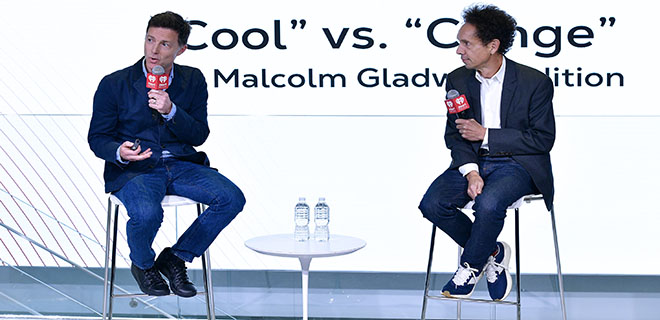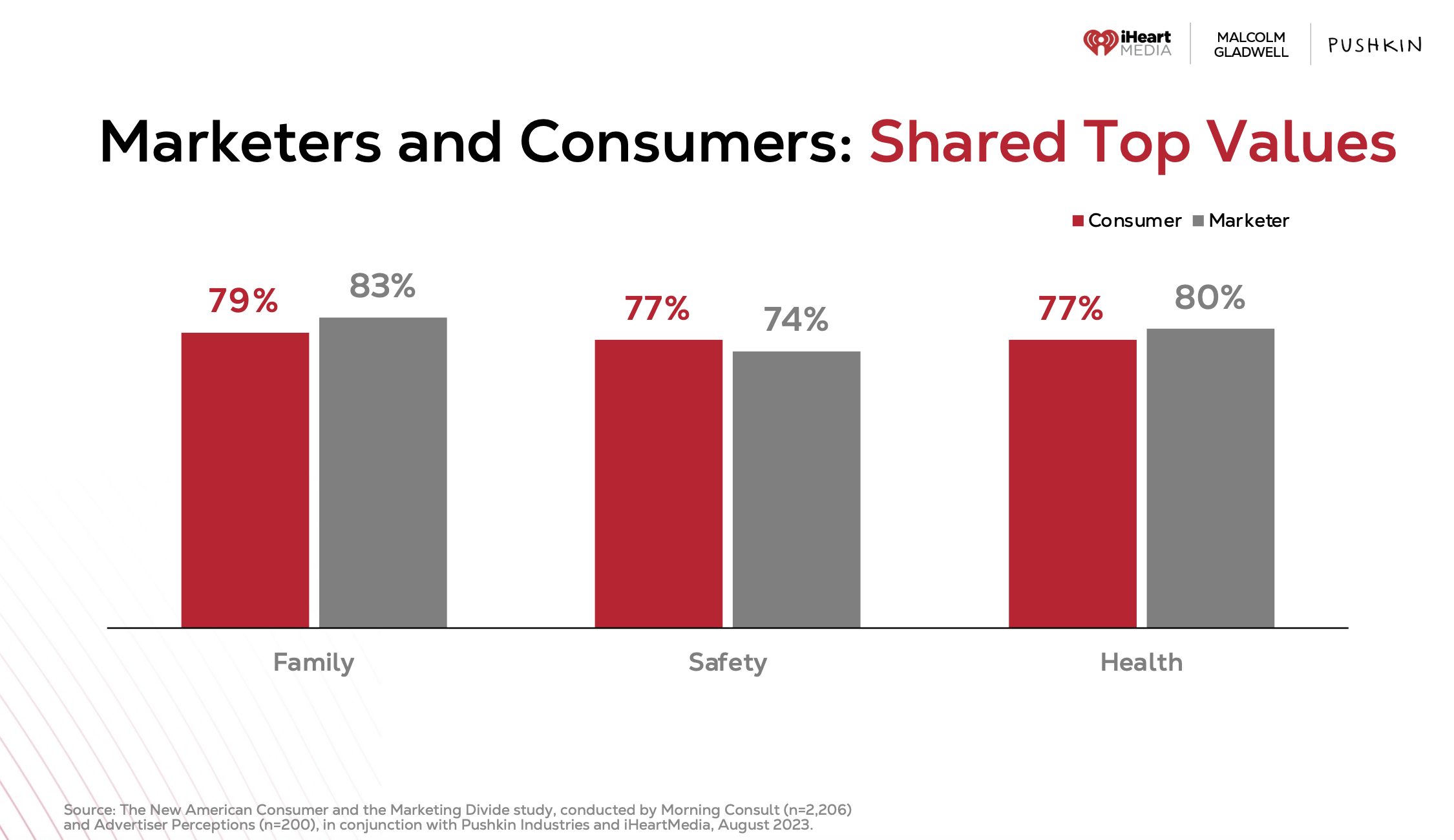
The first step to bridging the marketer-to-consumer gap is being aware of the problem.
How marketers think and how consumers think is completely different. That is why marketers must strategize and align their marketing and media plans with consumers’ wants and needs. This strategy is crucial to successful campaigns in an increasingly polarized post-COVID society.
During iHeartMedia’s AudioCon 2023, Conal Byrne, CEO of iHeartMedia Digital Audio Group, sat down with author and podcaster Malcolm Gladwell to examine this growing consumer marketing disconnect. They discussed the results of a Morning Consult and Advertiser Perceptions study that examines the growing divide between consumer values and behaviors and “marketing priorities.”
Values is a loaded term; when we think of values, we think of the things we hold near and dear to our hearts. While marketers are consumers, we consume different things, so finding the right synergy with your marketing audience creates better outcomes.
“Consumers in America will say the military actually matters a lot to me, and so does freedom of speech and religion,” Byrne explained to a packed audience. “Much more so than marketers. For many people in this room today, it’s not that it doesn’t matter to us; it’s just it matters a lot more to the people we’re talking to every day in the marketing we do.”
As a seasoned professional, we know you know what you’re doing, but it’s safe to say you can’t just trust your gut and personal experiences when properly engaging with your consumers. Use real consumer data over personal biases. Speaking of real consumer data, see some of the findings from the report below and keep them at the forefront of your marketing.
The Disparities Between Marketers and Consumers
One drastic disparity between marketers and consumers is that marketers tend to emphasize shiny objects that consumers can care less about. For example:
- 33% of consumers reported that they’ve never heard of charcuterie, while ALL marketers are familiar with it.
- 62% of consumers have never heard of the show “Succession,” while less than 5% of marketers have never heard of “Succession.”
- 50% of consumers who responded had never heard of an Aperol Spritz, while only 3% of marketers reported unfamiliarity.
- About ⅓ of consumers have never heard of pickleball, while all marketers surveyed have heard of it.
When it comes to spending priorities, if given $1,000, marketers reported that they would put that money towards booking flights, whereas consumers preferred to use that money to pay off bills and debt. In terms of electric vehicles, marketers are four times more likely than consumers to drive one.
Perspectives for consumers and marketers were different across the board. Eighty percent of marketers reported their careers as a huge part of their identity, while only 42% of consumers agreed. Seventy-seven percent of marketers are optimistic about their finances, while only 54% of consumers are. When it comes to social media, giving up Instagram is twice as hard for marketers as it is for consumers. It’s twice as hard for consumers to let go of their favorite podcast.
Marketers should keep these stats in mind, and stop trying to over-glorify things that your consumers don’t give an F about. They are most motivated by their family and friends, unlike marketers, who are inspired most by fortune, fame, and fear. The best marketing strategy of all: Know who you’re talking to.
Areas Where Marketers and Consumers See Eye-to-Eye
For both groups, their biggest guilty pleasure and hardest habit to eliminate is snacking between meals. Everybody loves to eat, so that’s not surprising. One-third of both marketers and consumers think radio is “cool.” Both also agreed that they want to hear from real people, as the influencer thing is pretty much played out now. Marketers and consumers also agreed that if given an extra hour a day, they’d use it for sleep.
The takeaway from all of this is whether you’re a marketer or a consumer, we all live in bubbles. The uniqueness of a marketer’s job is to see through that bubble and understand how to engage with the person on the other side who may think and act a lot differently. This is only the first step in using the power of data to shore up your marketing plans , but, overall, the future of consumer-centric marketing is bright.
